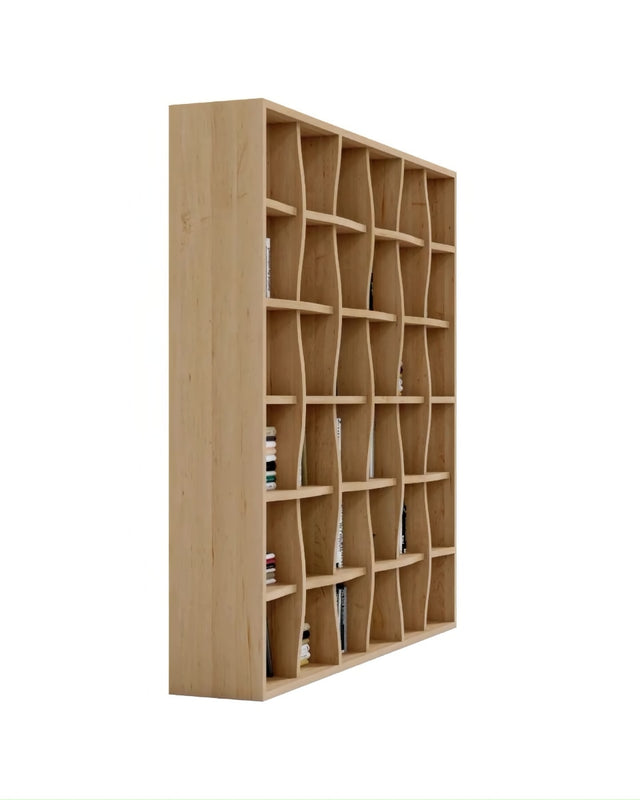Real Wood vs. Engineered Wood
Choosing the right type of wood for your furniture is a critical decision. In the realm of wooden furniture, two primary contenders exist: real wood (also known as solid wood) and engineered wood (MDF, plywood, etc). Both offer distinct advantages and are suited to different needs and preferences. In this article, we will explore the benefits of each to help you make an informed choice when furnishing your home.
Real Wood |
Engineered Wood |
|
Oak
|
Medium Design Fibreboard (MDF)
|
|
Maple
|
High Design Fibreboard (HDF)
|
|
Walnut
|
Particle board
|
|
Cherry
|
Plywood
|
|
Mahogany
|
Oriented strand board (OSB)
|
|
Teak
|
Laminated Strand Lumber (LSL)
|
|
Rosewood
|
Laminated Veneer Lumber (LVL)
|
|
Ebony
|
|
|
Ash
|
|
|
Beech
|
|
|
Pine
|
|
|
Spruce
|
|
|
Fir
|
|
|
Cedar
|
|
|
Redwood
|
Authenticity and Natural Beauty
Real wood, also known as solid wood, offers an authentic and natural aesthetic that's unparalleled. Each piece of solid wood furniture boasts a unique grain pattern, colour and texture. The inherent beauty of real wood adds warmth and character to any space, making it an ideal choice for those who appreciate the genuine, rustic, or traditional look.
Engineered wood, often created from wood fibres, veneers, and adhesives, can replicate the look of real wood but lacks the authenticity of the original material. While it can be an excellent choice for cost-effective and versatile furniture, engineered wood may not offer the same depth and richness of appearance as real wood.
Stability and Durability
Real wood, particularly hardwoods like Oak, Maple and Walnut, is celebrated for its exceptional durability and longevity. Solid wood furniture can withstand the test of time and can be passed down through generations. The density and strength of real wood make it resistant to wear and tear, offering furniture that becomes more beautiful with age.
Engineered wood is designed to be stable and resistant to warping, cracking and splitting, making it a reliable choice for furniture. They can offer enhanced stability and can be less susceptible to the natural expansion and contraction that real wood can experience in varying humidity levels.
Craftsmanship and Customisation
Real wood is highly prized by artisans and skilled woodworkers due to its workability. Solid wood can be intricately carved, joined and crafted, allowing for exquisite detailing and precision in furniture design. The ability to sand and refinish solid wood makes it an excellent choice for maintaining and restoring its original lustre over the years.
Engineered wood, while less malleable than solid wood, offers versatility in terms of design and customisation. It can be engineered to specific dimensions and shapes, catering to various furniture styles. Engineered wood also accepts veneers and finishes exceptionally well, enabling a wide range of customisation options.
Sustainability and Cost
Real wood, particularly hardwoods, can be more costly due to their limited availability and extended growth periods. However, investing in solid wood furniture is also an investment in quality and longevity.
Engineered wood is often considered a more sustainable choice because it utilises wood byproducts and can be manufactured from fast-growing tree species. It reduces waste and minimises the impact on natural forests, making it an eco-friendly option.
Summary
The choice between real wood and engineered wood for your furniture ultimately depends on your preferences, budget and specific needs. Real wood offers authenticity, natural beauty and unparalleled durability but can be more expensive. Engineered wood provides cost-effective options, versatility and sustainability, making it an excellent choice for those seeking value and functionality. When deciding on the type of wood for your furniture, consider your personal aesthetic preferences, budget constraints and the intended use of the furniture, to make an informed and satisfying choice that suits your individual needs.




